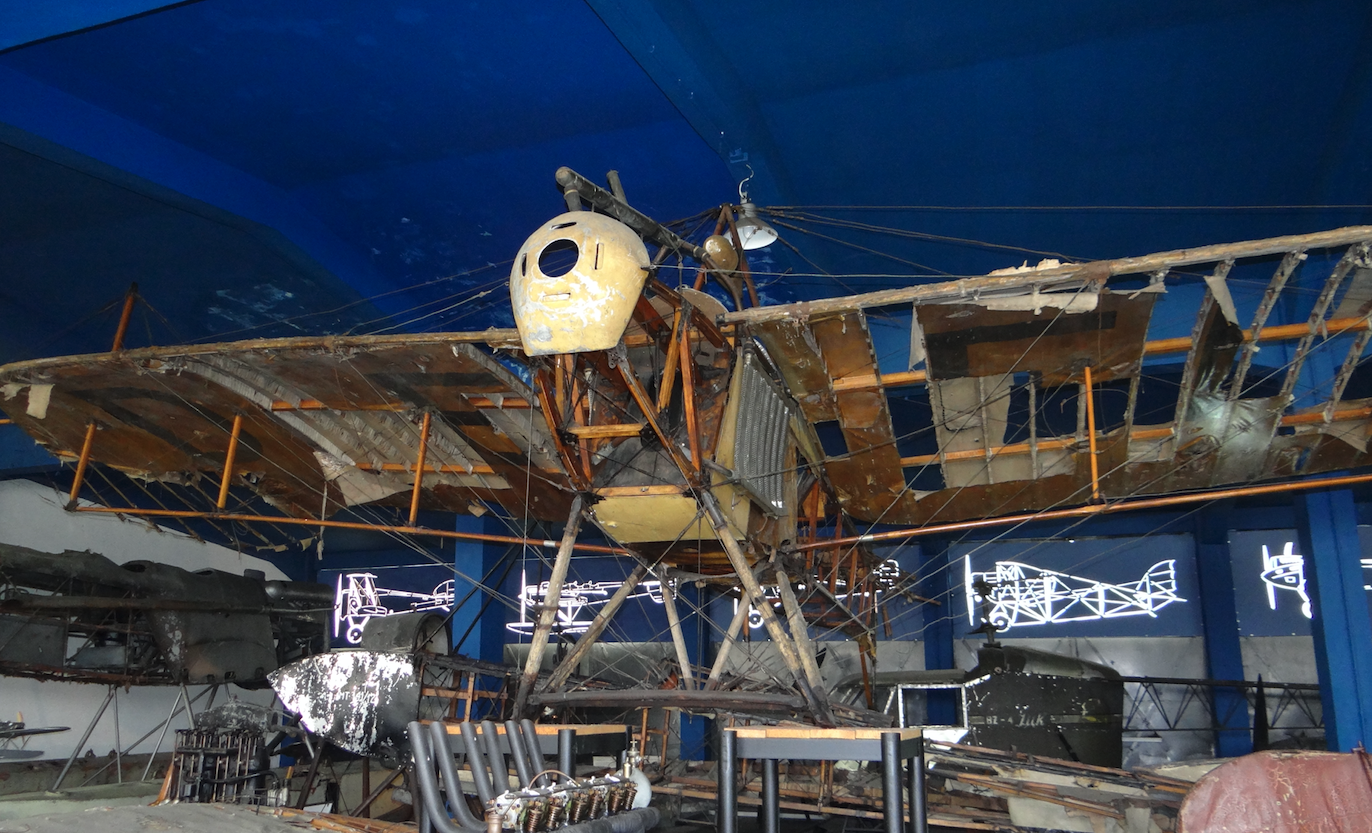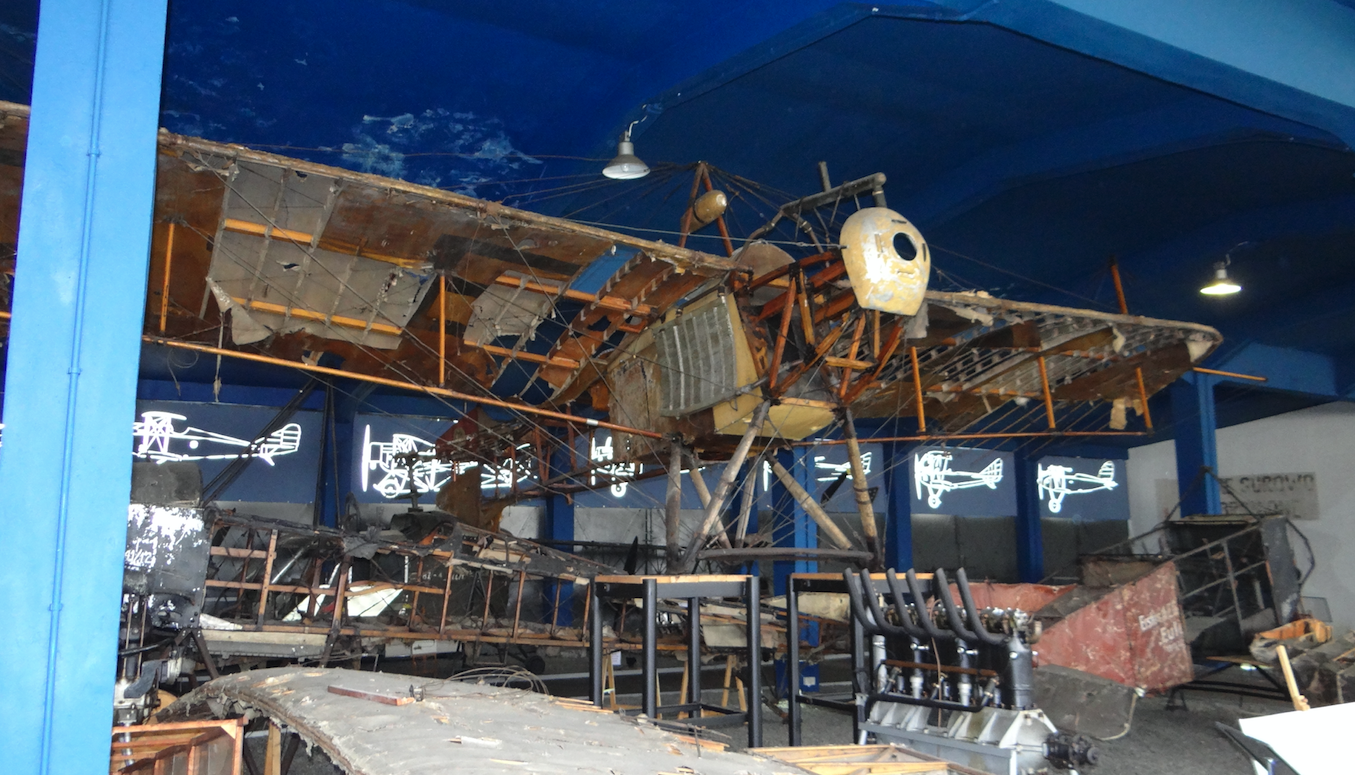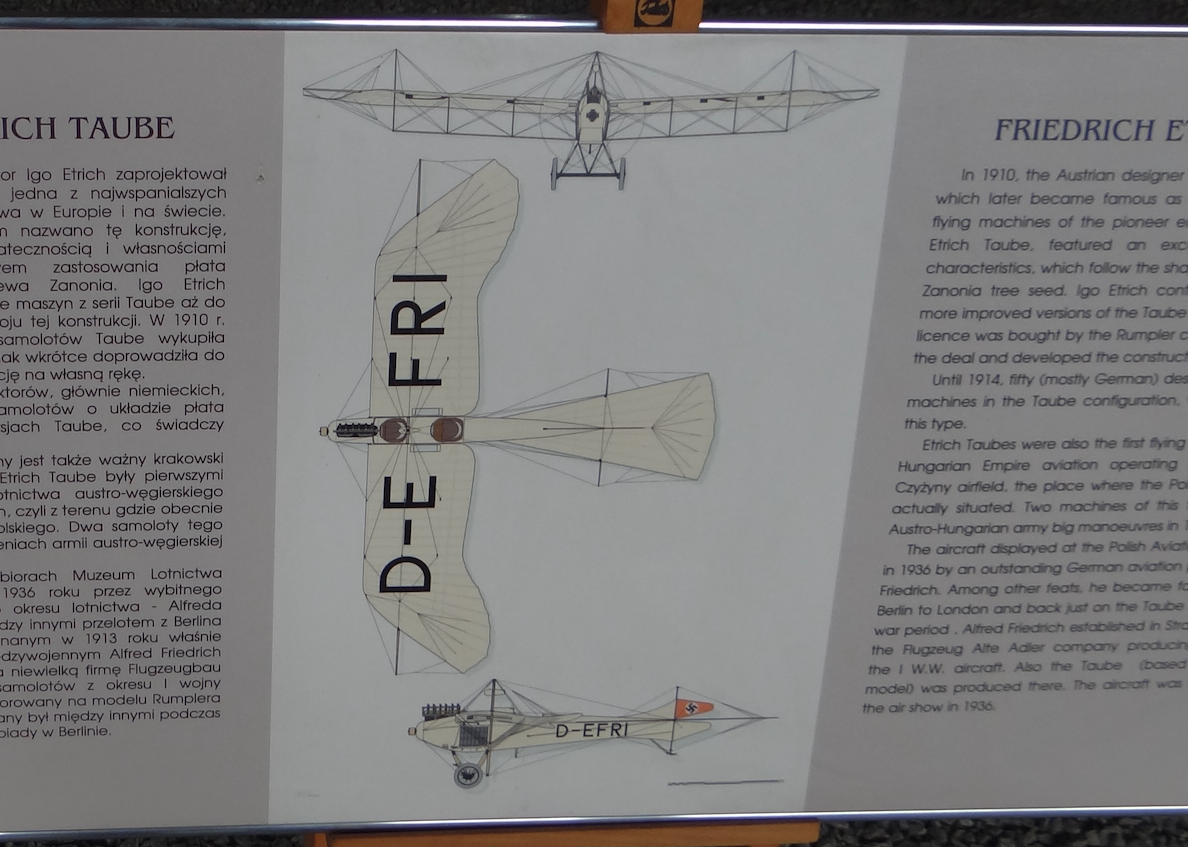Kraków 4-02-2021
History



The Etrich Taube is the most popular Austrian and German aircraft from the period before the Great World War. The constructor of the aircraft was Igo Etrich. The word Tauube means pigeon. The aircraft was manufactured in many plants, including Aviata (at least 1 piece). These planes were also known as Rumpler Taube, from the German plant that built the most of them. It was the first successful two-seater. The plane uses the shape of the seeds of the "Zanonia macrocarpa" plants, which are carried very far by the wind. First there were models of gliders, gliders, and finally an airplane. Front engine monoplane system with pull propeller. Sheet metal engine for improved aerodynamics. Construction made of metal pipes or mixed by other manufacturers. The outline of the wings resembles a bird’s wings. The plane had no ailerons. Their role was played by the flexible ends of the lobe. The plane was very safe. He tended to smooth the flight and was extremely sedate. It was cheap to produce and operate. The Etrich Taube aircraft was produced from 1910 to 1913. At least 200 machines were built. Due to the unregulated formal and legal status and the lack of a license, the plane was copied many times. As the plane was built by different companies, you can meet different technical data. Dimensions span 13.5-14.5 m, length 12-14 m, engines 50-100 HP.
The Etrich Taube plane was characterized by excellent stability and flight characteristics. By 1914, over 50 designers were modeling the aircraft. As a result, about 500 aircraft with wings modeled on the Etrich Taube aircraft from its first construction period were created.
The Etrich Taube plane in Krakow.
Etrich Taube planes were the first machines that were operated at the Rakowice airport. It was at a time when Krakow was under the Austro-Hungarian partition. In 1912, two Etrich Taube planes took part in exercises by the Austro-Hungarian troops.The plane in the collection of the Polish Aviation Museum in Krakow was built in 1936 as a flying replica by Alfred Friedrich. The plane was made in a small factory near Berlin, which specialized in the construction of flying replicas, from the pioneering period of aviation. The construction of the replica was based on the Rumpler Taube plans from 1913.
Construction
The Etrich Taube is a two-seater, single-wing, mixed structure aircraft. The entire plane is stiffened with numerous wire lashings. The plane as a combat machine did not have permanent weapons. The airmen used personal weapons and rifles with cut barrels. Light bombs were taken on board and thrown by hand.
Wings with a contour resembling a plant seed, with a very high lift. The wings do not have ailerons. Their role is played by the flexible tips of the wings. The wings are covered with linen. The residual hull accommodates two people who take a tandem seat in the open cabins. The engine is located at the front of the fuselage and drives a two-bladed pull propeller. The engine is profiled with metal sheets. The tail is of the bird’s tail type. It is covered with linen. The main chassis is made of two suspended wheels. It is complemented by a tail skid.
Various engines were used in the aircraft, mainly in-line, 4-cylinder or 6-cylinder, liquid cooled. The engine radiator is located on the sides of the fuselage and resembles panel heaters.
Data T-T Etrich Taube:
Two crew. Span 13-16 m. Length 9-11 m. Height 2-2.5 m. Bearing area 30-35 m2. Curb weight 600-700 kg. Take-off weight 800-950 kg. Top speed 90-120 km / h. Range 100-150 km. The ceiling is 2,000 m.
Tally
One Etrich Taube plane was built in 1910 at the Awiata plant in Warsaw. Etrich Taube planes were used at the Rakowice airport in Kraków. Poles also flew on Etrich Taube planes during the Great World War.
Written by Karol Placha Hetman
